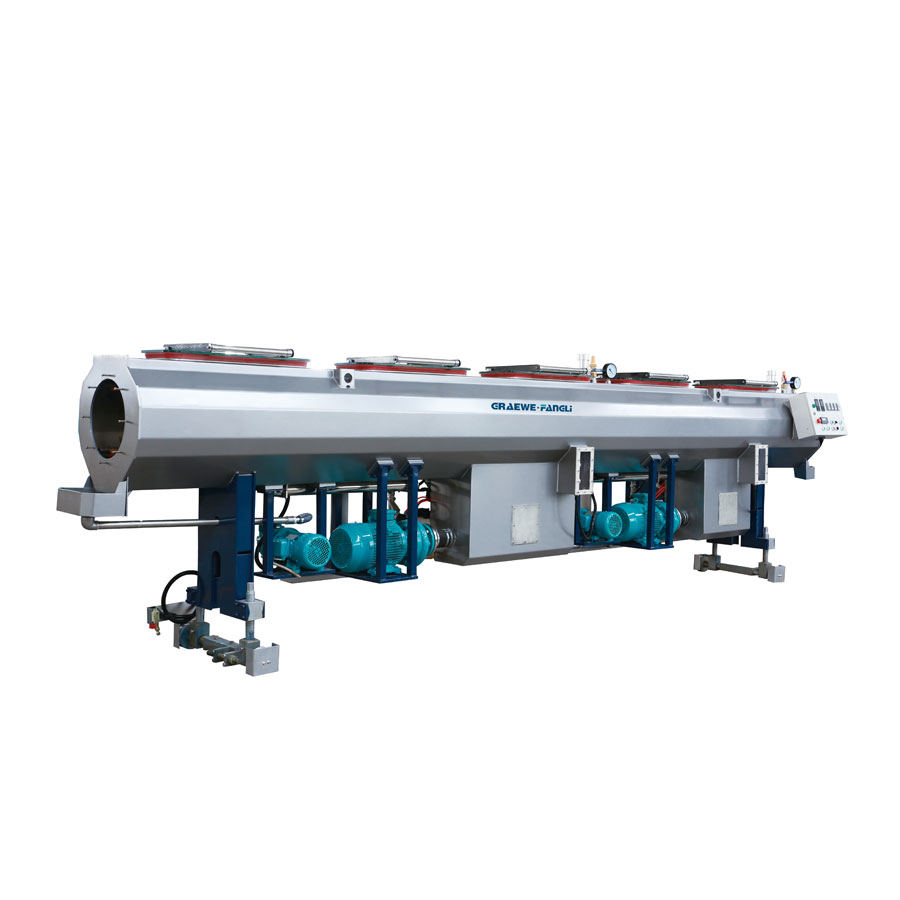- English
- Español
- Português
- русский
- Français
- 日本語
- Deutsch
- tiếng Việt
- Italiano
- Nederlands
- ภาษาไทย
- Polski
- 한국어
- Svenska
- magyar
- Malay
- বাংলা ভাষার
- Dansk
- Suomi
- हिन्दी
- Pilipino
- Türkçe
- Gaeilge
- العربية
- Indonesia
- Norsk
- تمل
- český
- ελληνικά
- український
- Javanese
- فارسی
- தமிழ்
- తెలుగు
- नेपाली
- Burmese
- български
- ລາວ
- Latine
- Қазақша
- Euskal
- Azərbaycan
- Slovenský jazyk
- Македонски
- Lietuvos
- Eesti Keel
- Română
- Slovenski
- मराठी
- Srpski језик
What environment use Advanced Spray Cooling Water Tank?
2025-05-22
An Advanced Spray Cooling Water Tank is used in plastic pipe extrusion lines—especially when high cooling efficiency, precision pipe forming, and space-saving layout are needed.
Here’s where and why it’s used:
✅ Environments That Use Advanced Spray Cooling Water Tanks
Environment / Application Reason for Use
High-speed pipe extrusion lines (e.g., HDPE, PP, PVC) Spray cooling enables faster cooling vs. immersion tanks, supporting higher extrusion
speeds
Limited floor space production areas Spray tanks can be shorter in length, yet deliver effective cooling
Thin-wall pipe production Precise temperature control avoids pipe deformation during cooling
Pressure pipe extrusion (e.g., PE-100, multilayer composite pipes) Uniform surface cooling preserves circularity and mechanical integrity
Cleanroom or hygienic pipe manufacturing (e.g., PEX for medical or food industry) Closed spray systems help maintain water quality and reduce contamination
Multi-size pipe lines with frequent changeovers Adjustable spray nozzles and modular tank design speed up pipe size adjustments
Structured/corrugated pipe lines In combination with vacuum calibration, spray tanks offer secondary cooling without
deforming pipe corrugation
Co-extrusion lines (e.g., foam-core, inner-grooved pipes) Gentle and even cooling maintains multi-layer structure integrity
Features That Make Them Ideal in These Settings
· High-pressure spray nozzles for efficient heat transfer
· Stainless steel construction for corrosion resistance
· Adjustable spray patterns for different pipe diameters
· Closed-loop water systems for stable temperature
· Water filtration and cooling systems integrated
· Modular structure for extending length as needed
Less Suitable For:
· Low-speed, low-volume lines (immersion tanks may be cheaper)
· Large-diameter pipes (>630mm) where immersion tanks are more practical for mass cooling




